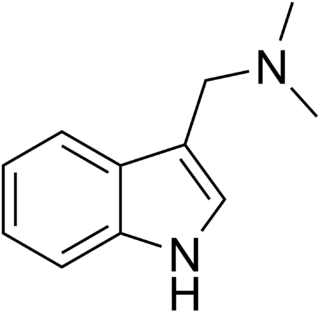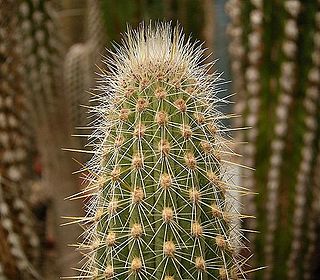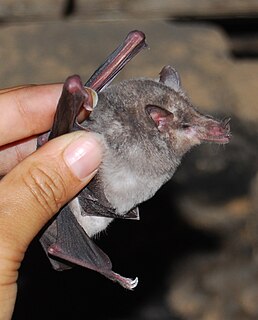
The Mimosoideae are trees, herbs, lianas, and shrubs that mostly grow in tropical and subtropical climates. They comprise a clade, previously placed at the subfamily or family level in the flowering plant family Fabaceae (Leguminosae). In previous classifications, Mimosoideae refers to what was formerly considered the tribe Mimoseae. Characteristics include flowers in radial symmetry with petals that are valvate in bud, and have numerous showy, prominent stamens. Mimosoideae comprise about 40 genera and 2,500 species.

Cedrela is a genus of several species in the mahogany family, Meliaceae. They are evergreen or dry-season deciduous trees with pinnate leaves, native to the tropical and subtropical New World, from southern Mexico south to northern Argentina.

Carica is a genus of flowering plants in the family Caricaceae including C. papaya, the papaya, a widely cultivated fruit tree native to the American tropics.

Gramine is a naturally occurring indole alkaloid present in several plant species. Gramine may play a defensive role in these plants, since it is toxic to many organisms.
Tovomita is a plant genus of the family Clusiaceae. They are noted for having white-yellow latex and containing xanthones. There are about 45 species, found in tropical America, 30 of which are in Venezuela.

Weberbauerocereus is a genus of ceroid cactus, considered to be intermediate between the genera Trichocereus and Cleistocactus. The genus is named after August Weberbauer because of his extensive research in the Peruvian Andes.

Pothuava is a subgenus of the genus Aechmea.

Piptadenia is a genus of tropical shrubs and trees of the legume family.
Tovomita weberbaueri is a species of flowering plant in the Clusiaceae family. It is found only in Peru.

The long-snouted bat is a species of bat in the family Phyllostomidae. It is monotypic within the genus Platalina. It is endemic to Peru. It feeds almost exclusively on the nectar and fruit of the columnar cactus. There are only seven known populations and despite little research having been done on this species, they are listed as near-threatened due to habitat loss causing the removal of their primary food source.
Polylepis weberbaueri is a species of plant in the family Rosaceae. It is found in Ecuador and Peru. It is threatened by habitat loss.

The Guajira-Barranquilla xeric scrub is a xeric shrubland ecoregion in Colombia and Venezuela, covering an estimated area of 150,000 km2 (58,000 sq mi). Rainfall varies from 125 to 1,000 mm, and the median temperature is 26 °C (79 °F).

Masdevallia weberbaueri is a species of orchid found from southern Ecuador into northern Peru.
Puya weberbaueri is a species in the genus Puya. This species is native to Bolivia.
Paramongaia is a genus of South American plants in the Amaryllis family, found only in Peru and Bolivia. Common name is "giant Peruvian daffodil."
Urceolina is a genus of South American plants in the Amaryllis family, all native to Perú.
Eucosmocydia mixographa is a species of moth of the family Tortricidae. It is found in the Democratic Republic of Congo.
Schistonema is a species of plants in the Apocynaceae first described as a genus in 1906. It contains only one known species, Schistonema weberbaueri , native to the Cajamarca region of Peru.
Guadua weberbaueri is a species of clumping bamboo found in Bolivia, Brazil, Colombia, Ecuador, French Guiana, Peru and Venezuela.

Weberbauerocereus weberbaueri is a species of Weberbauerocereus from Peru.











